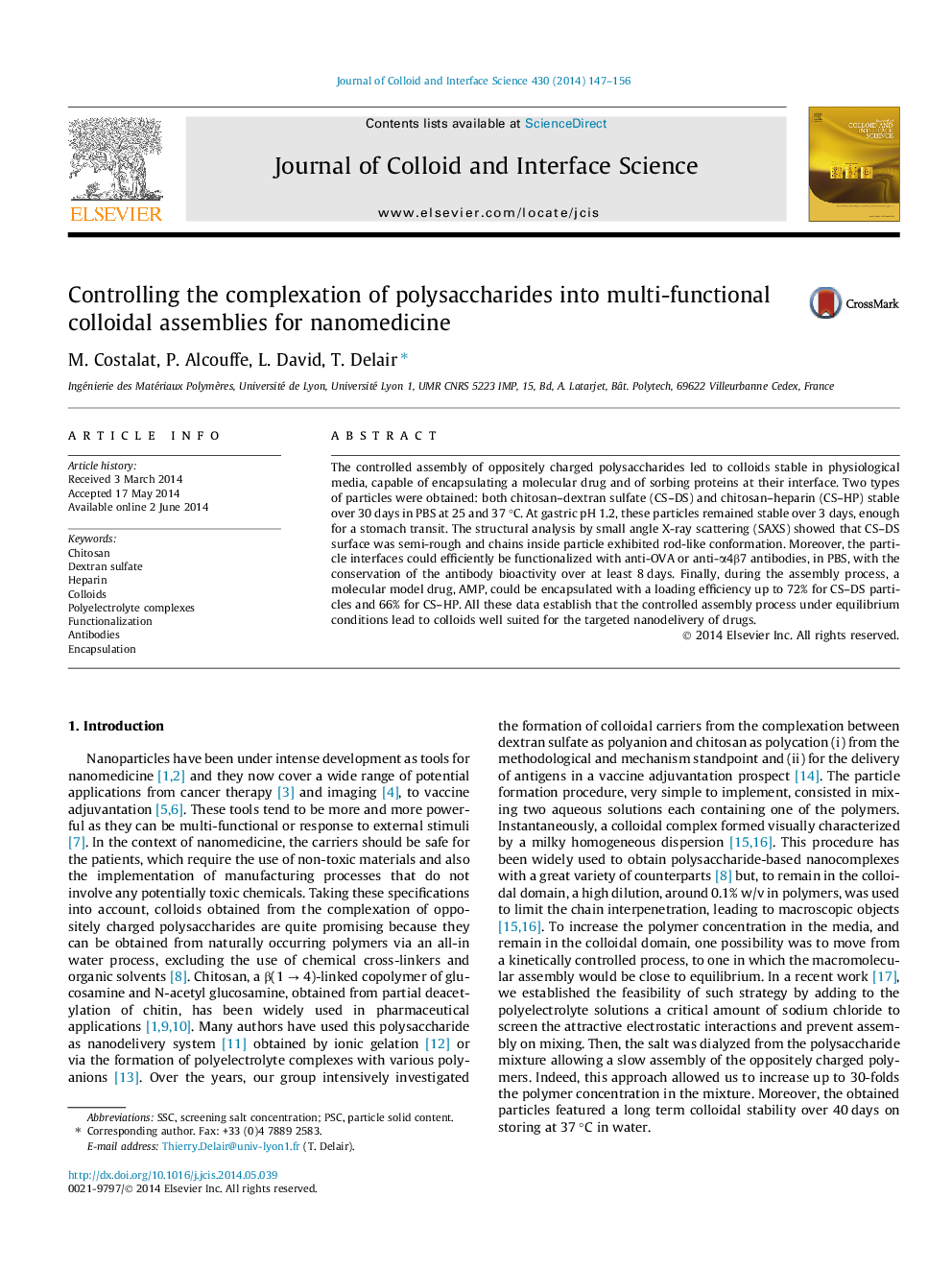| Article ID | Journal | Published Year | Pages | File Type |
|---|---|---|---|---|
| 607189 | Journal of Colloid and Interface Science | 2014 | 10 Pages |
•Colloidal chitosan complexes by controlled assembly of heparin or dextran sulfate.•Long-term stability in water, PBS and acidic medium.•Molecular drug successfully encapsulated.•Various antibodies sorbed at the particle interface with conservation of activity.•Multifunctional nanodelivery systems formed by polyelectrolyte controlled assembly.
The controlled assembly of oppositely charged polysaccharides led to colloids stable in physiological media, capable of encapsulating a molecular drug and of sorbing proteins at their interface. Two types of particles were obtained: both chitosan–dextran sulfate (CS–DS) and chitosan–heparin (CS–HP) stable over 30 days in PBS at 25 and 37 °C. At gastric pH 1.2, these particles remained stable over 3 days, enough for a stomach transit. The structural analysis by small angle X-ray scattering (SAXS) showed that CS–DS surface was semi-rough and chains inside particle exhibited rod-like conformation. Moreover, the particle interfaces could efficiently be functionalized with anti-OVA or anti-α4β7 antibodies, in PBS, with the conservation of the antibody bioactivity over at least 8 days. Finally, during the assembly process, a molecular model drug, AMP, could be encapsulated with a loading efficiency up to 72% for CS–DS particles and 66% for CS–HP. All these data establish that the controlled assembly process under equilibrium conditions lead to colloids well suited for the targeted nanodelivery of drugs.
Graphical abstractFigure optionsDownload full-size imageDownload high-quality image (78 K)Download as PowerPoint slide
